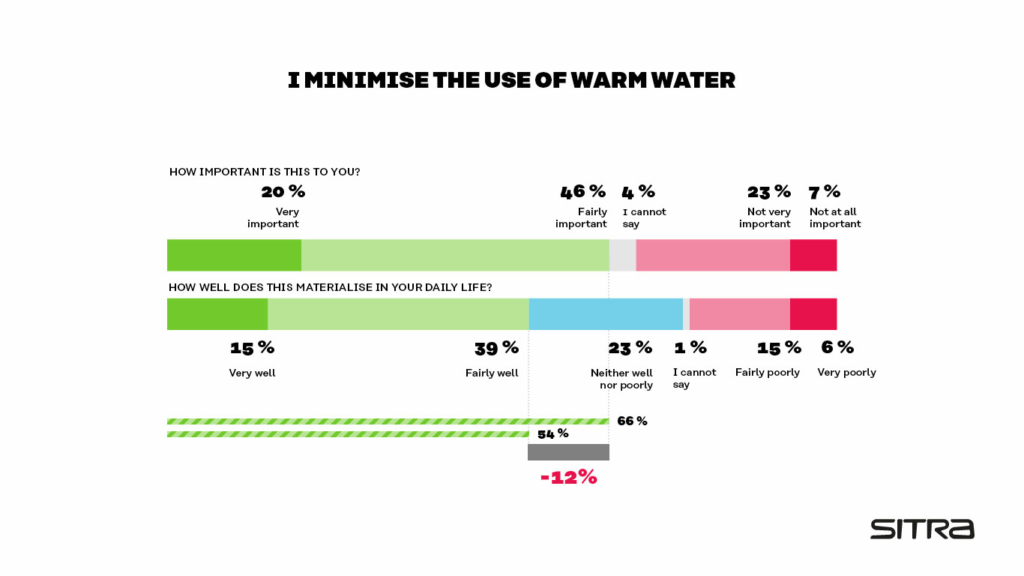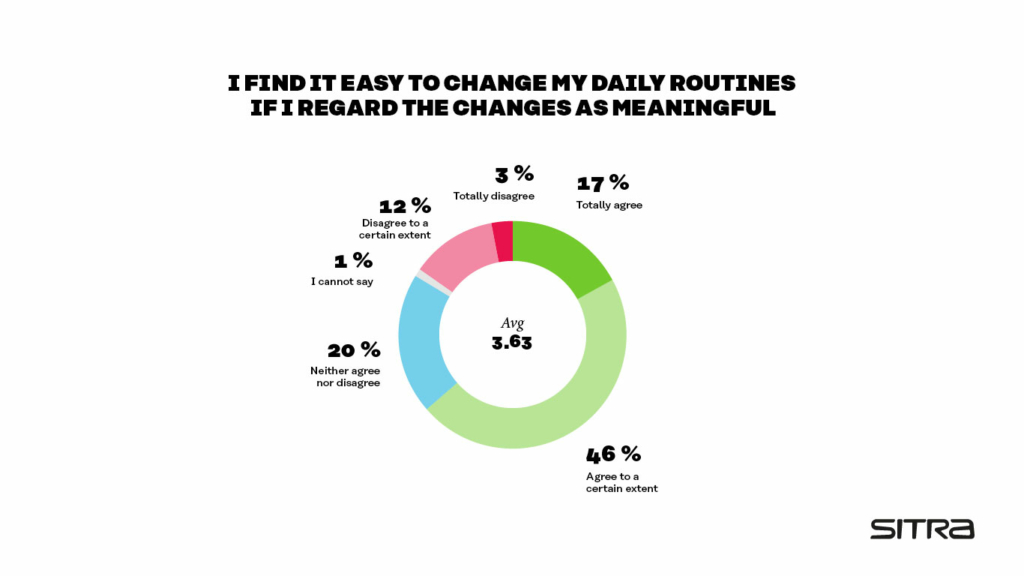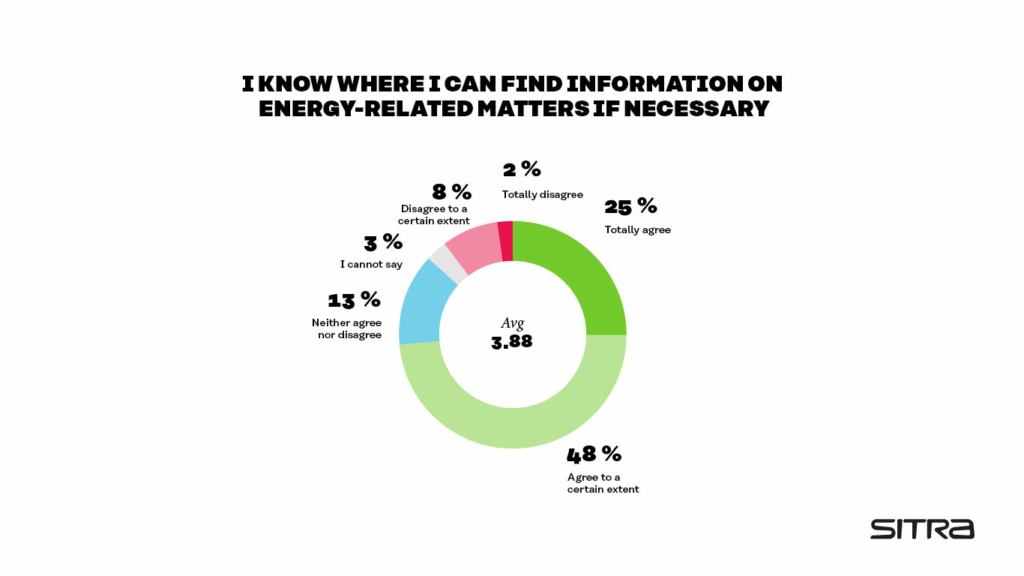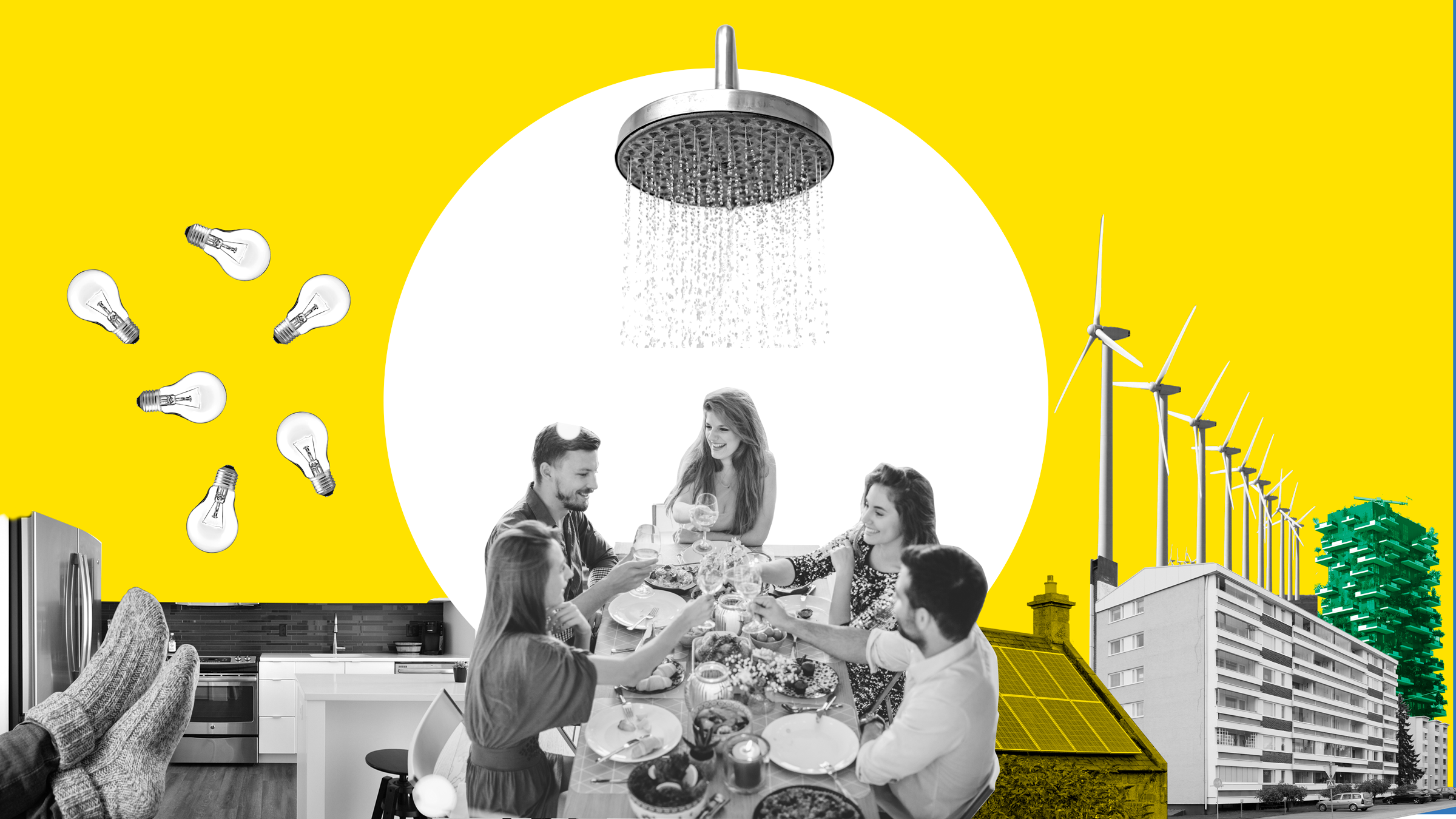According to the Finnish Environment Institute’s (SYKE) report published in October 2017, over a third of the average carbon footprint based on an ordinary Finn’s consumption comes from living-related emissions. Actions related to energy consumption have the potential to reduce the living-related carbon footprint by over 40%. What does this mean in practice? What kinds of choices do we Finns make already, and how could we change our ways of living in the future?
Finns recycle and waste water
People do not necessarily view many of their daily actions as environmental accomplishments, but many are already routine. For instance, over 80% of respondents in Sitra’s Resource-wise citizen survey (in Finnish) recycle their waste and turn off devices and lights when not in use. Many are motivated by the idea of saving money, but even more people say that it would feel irresponsible to do otherwise.
In this “land of a thousand lakes”, people still think we have abundant amounts of water. This is reflected in how we bathe and wash. Many people do not necessarily think that heating water for a shower uses a lot of energy. According to Sitra’s report, only approximately half of the respondents say that they minimise the use of hot water, although a greater percentage (66%) consider it important.

Other actions related to living and everyday life for which there is room for improvement in Finland include switching over to LED lights (57% say they have done this) and lowering room temperatures (46% say they have done this). Only one quarter of respondents monitor their electricity consumption via an electronic monitoring service. It is, however, positive that up to 63% of people feel that they can easily change their daily routines if they regard these changes as meaningful.

There is plenty of information available on how to save energy. The majority of all respondents, 73%, know where to look for information on energy-related matters if necessary. Respondents under the age of 30 have the weakest energy-related knowledge, but the ability to search for information becomes increasingly stronger the older the age group.

Joint use of facilities and the sharing economy reflect the choices made by young people
There are differences between where younger and older age groups choose to live and in their day-to-day life at home. Young people tend to choose to live close to good transport connections and near to their places of work or study. They use their housing association’s common facilities more often than others and are also bolder when it comes to using new services based on the sharing economy, such as renting their own apartment via Airbnb or similar.
People under the age of 30 have less confidence in their own example if others do not behave in an environmentally friendly way. The groups of older respondents take into account matters related to living and especially to energy-saving more extensively in their everyday life, which also leads to taking action more often than among young people. The older the age group, the more often the respondents turn off electronic appliances when not in use, separate waste, have shorter showers and know more about the energy consumption of their current residence.
People living in blocks of flats tend to have fewer opportunities to affect the temperature of their own place of residence than people living in detached houses. In rented accommodation, the consumption of heating and water does not necessarily translate into practice, if the expenses are included in the rent. As young people live in rented accommodation and apartment blocks more often than older generations, this is naturally reflected in their responses. People living in detached houses or townhouses reduce the temperature of their home and water consumption more often than others. The form of accommodation does not, however, fully explain the differences in the responses given by young and older people, as everyone has the same opportunity to monitor their electricity consumption. People living in blocks of flats and townhouses should also monitor their water and electricity consumption.
Self-produced energy requires guidance and new services
Of all the respondents, 37% regard it important that the energy used by their housing association or detached house is produced by geothermal power, heat pumps, solar panels or similar sources of renewable energy. However, only one fifth of all respondents report that this is the case in their everyday life. Presumably, residents of detached houses and townhouses report more often that they use one of the alternatives listed above. Of people living in detached houses, 37% say that they have a heat pump, 12% have a geothermal pump and 5% say they have started producing solar or wind power.

According to a survey conducted by Fortum, four out of five Finns have a positive view of solar panels. Last year, a report compiled by the City of Turku, Turku Energia Oy and Sitra was published that mapped out expectations related to the acquisition of solar panels. According to this report, households need a more personalised service that takes into consideration people’s different needs and personal solutions tailored to each property. The development of carbon-neutral business would benefit from knowing what types of new services are necessary for promoting the self-production of renewable energy. Moreover, information on how much households would be prepared to pay for these services would also be useful.
Electricity based on renewable energy is regarded as the better alternative
One third of all respondents say they buy electricity based on renewable energy sources. According to the survey, a slightly larger proportion (40%) of people regard the acquisition of renewable energy important than who already buy it.
Most of the respondents who have signed “green electricity” contracts justify their choice with climate and environmental reasons. This is poignantly described in the following response: “Energy production based on fossil fuels accelerates climate change, when it should be slowed down.” Some indicate they selected a green electricity contract because they do not want to promote the use of nuclear pokwer, while some say that the reason is low costs compared to other available electricity contracts.

The responses also indicate that, for some of the respondents, the obstacles to signing a green electricity contract are the difficulties in comparing electricity prices and signing a contract. Some are very direct and say that they do not trust what the energy companies say, and some think that they are already buying electricity produced from renewable sources, as their electricity company has committed to producing such energy. On the basis of this survey, it can be said that more guidance and more trustworthy marketing is required with regard to electricity contracts based on renewable sources.
Better life in austere times
Being happy with one’s own life is strongly linked with a sustainable lifestyle. The financial situation also affects the choices we make. According to Sitra’s report, respondents that regard their financial situation as weak make less sustainable choices in their daily life. It is understandable that if a person is burdened by financial worries, they do not often base their choices on environmental matters.
However, there are ways to save energy regardless of where and how one lives. Such everyday actions that also have the potential to save money include comparing the price of electricity contracts, minimising the use of hot water, the reasonable use of underfloor heating in the bathroom, cutting down sauna use, lowering room temperatures and separating waste correctly. Even if the financial savings are not necessarily very high for each individual action, it is possible to save some money and gain a better quality of life.
- The national energy-saving week took place between 9 and 15 October 2017 and includes a campaign for sensible energy consumption #energiansäästöviikko (#energysavingweek).
- Energy-saving tips for a more sustainable everyday life can be found on Sitra’s 100 smart ways website.
- Sitra’s Resource-wise citizen report from 2017 (in FInnish).
















Recommended
Have some more.